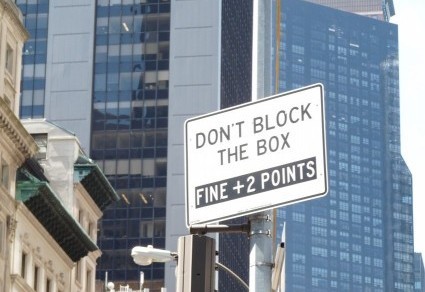To read signs in NYC is to wade into a swamp of uncertainty. Please, dear reader, put on your thinking cap and thigh-high boots. Rescue me from the swamp generated by these signs.
First up: this beauty, which was affixed to the fence surrounding a site associated with the never-ending construction of a new subway:

What kind of location?
I fooled around with hyphens for a while in the context of this sign. But what’s a “white-hat location” or a “white hat-location”? The punctuation mark solved nothing, because I don’t know the significance of a “white hat,” beyond the traditional (and somewhat racist) idea that good guys always wear white hats. I pondered whether the sign referred to “hard hats,” which are supposed to protect workers from head trauma. But then why not say so? Also, I’ve seen many construction workers wearing hard hats in other colors. Perhaps the hat color is associated with rank, in which case this location is open only to those who have earned a white hat, which, like a black belt in karate, signifies that they’ve achieved proficiency in something (subway building? procrastinating? maneuvering around piles of metal rods and concrete blocks?). Your guess is as good as mine.
Next up is this awning:

No candlestick maker?
I went through the hyphen calculation again with this sign and came up with nothing. If it’s “prime-butcher baker,” is the baker toasting top-notch butchers? Maybe it’s “prime butcher-baker” and the store employs a skilled (prime) person who works on both meat and baked goods. At one point the concept of prime numbers flashed through my consciousness, but I couldn’t link 2, 17, or 983 (to name a few) to the “butcher baker” idea. If any mathematicians have theories, please send me a note.
Last and maybe least is this one:

For cars?
What’s a “reduced garage”? For tiny cars only? A garage with fewer spaces? I thought the sign might refer to “reduced prices” until I took a look at the fees, which, I promise you, were in no way “reduced” unless your standard of measurement is the amount charged to park a car inside a luxury hotel suite (a ridiculous but apparently real offer to billionaires who have abnormal relationships with their vehicles).
I have more, but I’ll wait for a future post. I don’t want to swamp your speculative powers.





















